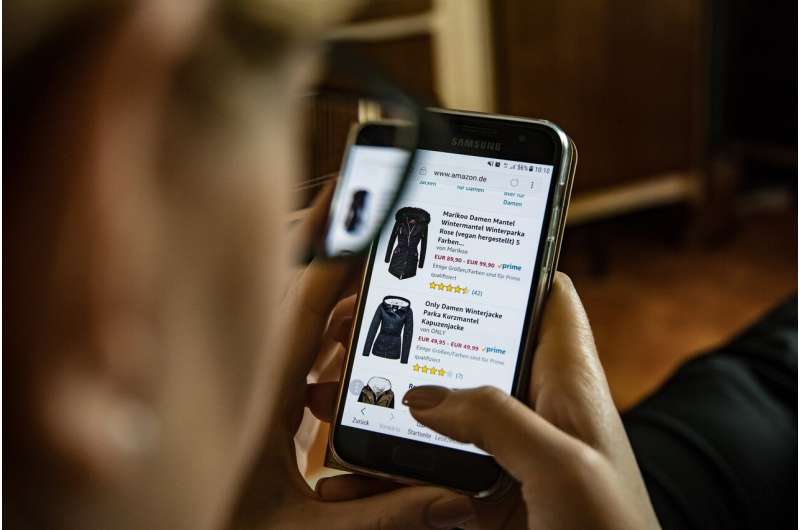This article has been reviewed according to Science X's editorial process and policies. Editors have highlighted the following attributes while ensuring the content's credibility:
fact-checked
peer-reviewed publication
trusted source
proofread
One-click checkout increases spending and engagement, shows study

You'd probably guess that simplifying the checkout process at an online retailer will lead customers to buy more. The question is: How much more?
New Cornell University research shows that after signing up for an online retailer's "one-click" checkout service, customers over time increased their spending by an average of 28.5% from previous buying levels.
Those customers also visited the website more often and bought a wider range of merchandise, according to a paper co-written by recent graduate Murat Unal, and Young-Hoon Park, a professor of management in the Cornell SC Johnson College of Business.
The study, "Fewer Clicks, More Purchases," published Feb. 22 in Management Science.
"Because one-click takes so much pain away from the shopping experience, we see consumers willing to spend more time on the site and search for more items, leading to the increase in spending," said Unal, now an economist at Amazon.
"One-click buying" lets customers store payment and delivery information with the retailer, then click a single button on an item to order, eliminating the tedium of filling the cart and plodding through a checkout process. Online retailers have long struggled with shoppers who ditch their carts during checkout: It's estimated that 70% of shoppers leave before paying, in part because they find checking out too complicated.
The researchers examined purchasing information from 977 customers who had registered for one-click shopping at a large Asian retailer that launched the service at the start of 2017. Analyzing data from January 2016 to August 2018, they found that customers who registered for the service not only spent more on average during the subsequent 15 months, but also raised their purchase frequency by 43% from their pre-one-click days, and the number of items purchased by 36%.
The data also showed that shoppers weren't merely shifting purchases from the company's brick-and-mortar stores, suggesting that the incremental purchases may have come at the expense of competing retailers who weren't offering the speedier checkout service, the researchers said.
Among one-click shoppers, the researchers saw "huge variation in how they spend," Park said. Those who were moderate, occasional buyers before signing up showed increases larger than those of both the heaviest and smallest spenders. The researchers speculate that the heaviest spenders may have already been close to their spending ceilings, while the smallest spenders simply may not have wanted to buy much more online, no matter how easy the process.
One-click customers may have purchased more because the simplified buying process made the site more engaging. Data on customer clickthrough patterns showed that over the 15 months following signup, one-click buyers visited the website on average 7% more than before signup, viewed 9.3% more pages on the website, and spent 7.8% more time on the site per visit.
The study examined data from only one company in a specific industry; Park and Unal said replication across other firms, industries and platforms is needed to build empirical generalizations.
These findings, however, may interest online retailers making inventory and delivery plans to support a launch of one-click shopping. They may also help companies that use target marketing to determine which customer segments are worth pursuing most aggressively with one-click offers.
Importantly, the research reminds companies of the value of removing hassle in the shopping experience.
"Even though it sounds simple," Park said, "it can have a profound impact for business."
More information: Murat Unal and Young-Hoon Park, Fewer Clicks, More Purchases, Management Science (2023). DOI: 10.1287/mnsc.2023.4716
Journal information: Management Science
Provided by Cornell University



















